Four Quarters Brewing Co.
Château Brane-Cantenac
Grand Cru Classé en 1855 Margaux Red Bordeaux Blend 2005
This is the first 2005 I’ve opened that was truly impressive this young. It’s untypical for most Margauxs. Bright mid red fruits on the palate with elegance and dripping acidity. Impressive bottling!!! Wish that I had bought a case in futures vs. four bottles. FYI, I never buy more than 6 bottles of almost anything.
The nose reveals, ripe; dark cherries, blackberries, black plum, black raspberries, strawberries, cherries, baked plum, high glass blue fruit hues, dry cranberries and pomegranate. Vanilla, light cinnamon, hint of clove, dash of nutmeg, pinch of white pepper, very dark, rich soil, limestone, pee gravel, cherry cola, fruit tea, black/red licorice, dry top soil/clay, a faint whiff of mint, some red fruit liqueur notes, bright red florals, blue flowers and fresh dark and fresh slightly withering florals.
The body is medium to just barely pushing full. The tannins are well rounded, soft and a bit dusty. The wine gently glides beautifully over the palate. The red fruits shine. Dark cherries, strawberries, cherries, pomegranate, blackberries, black raspberries, plum and blue fruit hues on the long set. Vanilla, light cinnamon, hint of clove, dash of nutmeg, very dark, rich soil, limestone minerals, pea gravel, some crushed dry rock powder, cherry cola, dark fruit tea, black/red licorice, dry top soil/clay, a faint whiff of mint, some red fruit liqueur notes, used leather, saddle-wood to light cedar, light cigar with ash, bright red florals, blue flowers and fresh dark and fresh slightly withering florals. The acidity is like a rain shower. The structure, length, tension and balance are magnificent. The long, elegant, well balanced, polished finish is delicious and goes on and on. This wine has really hit its stride, yet will continue to improve for another 10 years and perhaps beyond. After two hours in the the decanter, the wine put on weight and showed more dark fruits on the long palate set.
Photos of, Chateau Brane Cantenac, Owner Henri Lurton, field-hand doing the back breaking work of picking and their oak vat room.
Producer history and notes...Chateau Brane Cantenac started out in the early 17th century. At the time, the small estate was known as Domaine Guilhem Hosten. The vineyards and estate was developed by the owner in the late 1700’s by the Gorce family.
Their wine was so highly regarded back then, it was one of the more expensive wines in all of Bordeaux, selling for almost as much money as Brane Mouton. This is interesting because of who went on to buy the vineyard in the 1800’s.
The Baron of Brane, also known as “Napoleon of the Vineyards”, purchased the chateau in 1833. At the time of the sale, the estate was called Chateau Gorce-Guy. To get the funds to purchase the Margaux vineyard, the Baron sold what is now called Chateau Mouton Rothschild, which was at the time of the sale, known as Chateau Brane-Mouton.
In 1838, the Baron renamed property, taking his name and the name of the sector where the vineyards were located, calling it Chateau Brane Cantenac. The chateau later passed to the Roy family, who were well-known in the Margaux as they owned Chateau d’Issan as well.
Jumping to the next century, in 1920, the Societe des Grands Crus de France, a group of merchants and growers that owned several chateaux located in the Medoc including; Chateau Margaux, Chateau Giscours, and Chateau Lagrange in St. Julien, purchased Chateau Brane Cantenac.
Five years later, M. Recapet and his son-in-law, François Lurton, took over Brane Cantenac along with Chateau Margaux. Lucien Lurton (the son of François Lurton) inherited Brane Cantenac in 1956.
Today, the estate is still in the hands of the Lurton family. Brane Cantenac is currently owned and more than ably managed by the capable, Henri Lurton.
After being given the responsibility of managing Brane Cantenac, it was under the direction of Henri Lurton that large portions of the vineyard were replanted. Vine densities were increased, the drainage systems were improved and the plantings were also, slowly changed to their current plantings.
The 75 hectare vineyard of Brane Cantenac is planted to 55% Cabernet Sauvignon, 40% Merlot, 5% Cabernet Franc, 5% Carmenere and .5% Petit Verdot. Carmenere was used for the first time in the 2011 vintage. The Petit Verdot was planted in 2008. 2017 is the first vintage where Petit Verdot was added to the blend.
The 75 hectare Left Bank vineyard of Brane Cantenac is essentially unchanged since it earned Second Growth status in the 1855 Classification of the Medoc.
At least that is the case with the 45 hectares used to produce the Grand Vin of Brane Cantenac. Those 45 hectares are planted close to and surrounding the chateau. Those vines are located just in front of the Cantenac plateau and are the best terroir that Brane Cantenac owns. This parcel is the heart and soul of their wine.
They have other parcels, which are further inland, but much of those grapes are placed into their second wine. Those additional hectares can be divided into 3 main sections.
Behind the chateau, they have 15 hectares of vines on gravel and sandy soils. They have 10 hectares across the road with sand, gravel and iron and a 13 hectare parcel with gravelly clay called Notton, which is used for their second wine. More than vineyards, the property maintains beautifully, manicured gardens and verdant parkland.
Today, more than 25% of Brane Cantenac is farmed using organic farming techniques. It is expected that over time, the amount of hectares farmed with organic methods will be increased. 12 of those hectares are farmed using biodynamic techniques as well.
3 hectares of vines they own in the Haut Medoc appellation are planted to white Bordeaux wine varietals due to the the cooler terroir in that part of the appellation. The soils are gravelly clay. The vines are planted to 80% Sauvignon Blanc and 20% Semillon.
Chateau Brane Cantenac is vinified in a combination of temperature controlled, traditional, 22 oak vats, 18 concrete tanks and 20 stainless steel vats that vary in size from 40 hectoliters all the way up to 200 hectoliters, which allows for parcel by parcel vinification.
40% of the fermentation takes place in the oak vats. The oldest vines are vinified in vats that are selected to allow for separate parcel by parcel vinification.
The younger vines are vinified more often together in the same vats. However, the Carmenere and Petit Verdot are entirely micro-vinified, meaning that those grapes are completely vinified in their own barrels, using micro-vinification techniques. This takes place with the Carmenere and Petit Verdot because the amount of grapes produced is so small. Some vats of Brane Cantenac can be co-inoculated, meaning they go though alcoholic fermentation and malolactic fermentation simultaneously.
Malolactic fermentation takes place in a combination of French oak tanks and barrels. The majority of the Grand Vin goes through malolactic in barrel. The wine of Brane Cantenac is aged in an average of 60% new, French oak barrels for 17 months before bottling. The initial 2 months of aging is done with the wine on its lees, which adds more depth to the wine.
There is a second wine, Le Baron de Brane. The use of a second wine at Brane Cantenac is not new. In fact, previously, the second wine went under the name of Chateau Notton, which took its name from one of the main parcels where the grapes were planted. There is a third wine, Margaux de Brane, which is usually Merlot dominated.
Production of Chateau Brane Cantenac is about 11,000 cases per year depending on weather conditions. — 7 years ago
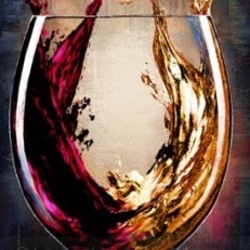
Enfield Wine Co.
Antle Vineyard Pinot Noir 2014
Fun tasting at Weygandt Wines with John Lockwood. The third of four wines being poured and first red.
Medium garnet red with a ruby core. A bit singular to start with a medium intensity floral attack. After a few minutes in the class, red berries carried throughout and the floral notes morphed into a spiced finish or white pepper. Medium tannins (5/10) and medium acidity (6/10) on the palate. Light body and fresh. Lots of red berries on the palate; strawberries, raspberries and a touch of rhubarb. Stoney notes and acidity carry from the mid palate through the long and lingering finish. Drink till 2024.
This wine is made up of 100% Pinot Noir. 50% whole cluster and aged in neutral hogshead barrels (350L) for 12 months. — 9 years ago
Matthiasson
Napa Valley Sauvignon Blanc Blend 2013
The 2013 blend is roughly 55 percent Sauvignon blanc, 25 percent Ribolla gialla, 15 percent Semillon, and 5 percent Tocai Friulano. All four varieties were co-fermented in 20% new Boutes barrels, and aged on its lees, with no stirring, until bottling. Splendid mix of old world with a dash of new world. The Sauvignon brings out the tropicals; peach, lychees, lime, pineapple, ripe fig, nuts and yellow & white florals. Ribolla gives it great stones & minerality. The Semillon gives it a waxy and creamy feel in the mouth. The Tocai Friulano gives it spice on the nose and palate. It's got great acidity with a rich, round, full long brilliant finish. — 9 years ago
Bedrock Wine Co.
Hudson Vineyard North "Whole Cluster" Syrah 2008
Colgin Cellars
Cariad Napa Valley Red Blend 2005
Today was an absolutely fantastic Friday hosting at the City Club by @Dan Fitzgerald. 1 sparkler, 3 whites, 4 reds, 1 dessert wine. Great job Dan!
The fourth of four Colgin’s served blind. My co-favorite. From the get-go, it was super concentrated, herbal, savory and just a hint of black fruit. Almost chewy in how dense it was. Smoky charcoal, wild herbs, cassis, and truffled blackberries. Still quite dry and tannic, even with the long decant. My initial, and final, guess was Colgin Syrah. Loved it. — 6 years ago
Four Brothers Wine Co.
Rose Of Grenache Santa Barbara County 2017
This pairs really well with jalapeño. I know, mind blowing. But it’s a perfect match. — 7 years ago
Domaine Leroy
Bourgogne Pinot Noir 2015
On the nose, nicely concentrated wild dark berries, black plum, notes of blue fruits, vanilla, understated cinnamon, soft, warm spices, Christmas cake and fresh dark, fragrant florals. The mouthfeel is rich & concentrated. The fruits dark are clearly fresh & ripe. Wild dark berries, black plum, plum, dark cherries, poached strawberries, black raspberries, Thompson raisins, light vanilla, soft warm spices, limestone minerals, grainy/silky chalkiness, dark moist soils, crushed rocks, violets, fresh dark florals, touch of mint, beautiful round acidity and amazing long rich beautiful finish that is well balanced fruit & earth. This is a vintage (even though Bourgogne) will cellar around 20 years. My rating could jump 2-3 points with proper storage years in the cellar. It's tasting more like 1st Cru than village wine. Photo tour of the estate, open top fermenters (I believe they ferment all their lots separately) and Lalou Bize-Leroy singing and talking to her precious vines. Producer history and notes...Domaine Leroy is arguably producing the greatest red Burgundy wines in the Cote d`Or at present. Lalou Bize-Leroy started out as a négociant, working for her family's Maison Leroy, which was founded by her father Henri. There are three parts to the Leroy empire; the Maison Leroy based in Auxey-Duresses, Domaine d’Auvenay and substantial holdings in Vosne-Romanée. Lalou Bize-Leroy also owns 25% of Domaine de la Romanée-Conti, where she was co-director until the other shareholders ousted her in 1992, partly because she had started a competing winery. Domaine Leroy has been farmed biodynamically from the start and is now certified by ECOCERT. The other exciting, if not controversial, move was the change in training system for the vines. For some time previously the hedging (rognage) of the vineyards had been done by hand rather than more abrasively by machine. However, it is not natural for the vine to be cut back as it affects the vine’s performance both in the current season and the following year. So now, after the flowering, when the shoots are lengthening, they are curled over instead of being cut back. This minimises entrecoeurs and second crop bunches forming, as well as leaving the vine happier and healthier. She also talks and sings to her vines daily. She believes this promotes health of the vines and who could argue with her given what she puts in the bottle. Lalou Bize-Leroy has 23 hectares of vines, mostly Premier and Grand Cru classified. In the vineyard, Lalou practices biodynamism as well as severe pruning and crop-thinning. The result is ridiculously low yields. Yield arguments at DRC were also an issue in her departure. You want to buy this wine. $39.99 at K&L Wine Merchants on pre-arrival. Just bought four bottles.
— 8 years ago
Enfield Wine Co.
Brosseau Vineyard White Wine "On Skins" Chenin Blanc Blend 2015
@Delectable Wine
This is the 2015 Enfield White Wine "on Skins" Brosseau Vineyard.
Fun tasting at Weygandt Wines with John Lockwood. The second of four wines being poured. Definitely unfiltered and medium to deep yellow. A little floral on the nose with some dirt and honeycombs. Love the mouthfeel and texture, balanced tannins (5.5/10) and acidity (6/10). Dark citrus notes with some hay. Packs a punch with a medium plus body. Just as John says "this wine is like rock and roll". A slight zing in the long finish. Drink till 2020.
This wine is made up of 60% Chenin Blanc and the rest of Marsanne, Roussanne and Viognier. Aged for 16 months in neutral oak on the lees. — 9 years ago
Enfield Wine Co.
Brosseau Vineyard Syrah 2014
@TheSkip this will be right up your alley.
Fun tasting at Weygandt Wines with John Lockwood. The last of four wines being poured.
Deep ruby red. Layered nose with iron from the get go with some spices, and dark red berries, a nice savory backend as well. Medium tannins (6.5/10) and medium plus bodied. Complex palate with lavender, black cherries, black olives and twigs. Solid acidity with dark gravel in the dry lingering finish. Definitely more of a Northern Rhone style Syrah. Drink till 2026
This wine is made up of 100% Syrah. 100% whole cluster and aged in neutral oak barrels (225L) for 12 months. Only 13.5% alcohol. — 9 years ago
Enfield Wine Co.
Citrine California Chardonnay 2015
Fun tasting at Weygandt Wines with John Lockwood. This was the first of four wines being poured. Medium pale yellow. A bit tight on the nose. A bit toasty with a touch of stone fruits. Moderate acidity (6.5/10) and light plus bodied. Well integrated with lemon zest and pears on the palate. Not oaky but a slight woody note and solid minerality in the backbone. Long and lingering finish. Drink till 2019. — 9 years ago
La Jota Vineyard Co.
Howell Mountain Cabernet Sauvignon 2010
An excellent blend of four Bordeaux varieties come together for tantalizing Howell Mountain amazingness. The nose is rich and stunning with notes of smoke, damp earth, leather and red fruits. On the palate I get more red fruits than I was expecting along with blackberries, earth, smoked meats, spice and espresso. Velvety light tannins for its age with a medium finish. — 9 years ago
Mother Earth Brew Co.
Four Seasons of Mother Earth Autumn Belgian Quad
Complex brew with toffee and caramel flavors. High alcohol balanced with richness and sweet notes. There is a hint of burnt sugar, otherwise it was a perfect beer. — 10 years ago
Bedrock Wine Co.
Limerick Lane Vineyard Zinfandel 2013
Can only affirm Antonio Galloni’s excellent review. Four years on, this is an outstanding bottle of Zinfandel. — 7 years ago
Rooster's Brewing Co.
247 Twenty Four Seven Session IPA
A real woman — 7 years ago
Lucia Vineyards (Pisoni)
Garys' Vineyard Pinot Noir 2012
A wine I’ve enjoyed mostly upon release or near it. I vowed to wait six years and nearly made it. At least it is 2018...just! It’s worth waiting this/that long for it to develop. On the nose; sweetly, baked fruits of; dark cherries, strawberries, black plum, plums, blackberries, and notes of blue fruits. Cinnamon, vanilla, very light clove & nutmeg, caramel, soft, medium, beautiful spice, black fruit tea, limestone minerals, loamy, dry, brown top soil, fresh dark florals and violets. The mouthfeel is full, rich & lush. The tannins are round, still have some teeth and possess velvety round edges. It’s fruit driven but not a bomb and showing elegance & grace. Fruits are perfectly ripe; dark cherries, strawberries, black plum, plums, blackberries, notes of blue fruits and dry cranberries dip in and out. Cinnamon, vanilla, very light clove & nutmeg, caramel, soft, medium beautiful spice that is more pronounced on the palate, black fruit tea, touch of melted brown sugar/molasses, limestone minerals, touch of rich dark sweet turned soil, loamy dry brown top soil, soft understated eucalyptus/mint, dry fresh florals and violets. The round acidity is just right, just a slight very small alcohol burn, the length, structure, tension and beautifully balanced finish are in a very good place. Even better in 2-3 more years in bottle; which is when I’ll have my next one. Photos of; the winemaking duo of Gary Franscioni (left) and Gary Pisoni, Rosella’s Vineyard on the right. As well as, Garys’ Vineyard at the bottom. Producer notes and history...The Santa Lucia Highlands appellation is known for its rich, vibrant Pinot Noirs. However, that wasn’t always the case. The first Pinot was planted in 1973, but results weren’t all that great. Chardonnay was the appellation’s early star. Much of the area’s current fame for Pinot Noir arguably can be traced to Gary Pisoni, a free-spirited wine enthusiast who grew up in a Salinas Valley vegetable farming family. Pisoni decided to plant a few acres of Pinot Noir in 1982 on his family’s horse ranch, at the southern end of what was to become the Santa Lucia Highlands appellation but his horses started eating the grapes. So, they had to go. His initial planting were limited by a lack of water until he dug a well on the property. Pisoni started planting even more Pinot Noir. The vineyard is now around 45 acres and nearly all of it Pinot. By the late 1990s, word had spread about the success of his vineyard, and a number of Pinot specialists from around California had started lining up to buy his grapes. He started producing his own wine in 1998. Pisoni isn’t the only Gary who has become a force in the Santa Lucia Highlands. Gary Franscioni, a childhood friend, followed Pisoni’s lead by planting grapes and started Roar Wines in 2001. The two of them now have five vineyards between them...all farmed meticulously with the same crew. They are best of friends...sort of a Mutt & Jeff. They have become a formidable presence in the Highlands, attracting interest from top winemakers and Pinot Noir lovers from all over. Franscioni is also from a vegetable farming family; Pisoni figures they’ve known each other since they were 3 or 4. Franscioni saw his friend’s success and once he got some money together, decided to plant grapes of his own. Franscioni’s property is farther north and cooler as it’s closer to the Monterey Bay. He was going to plant Chardonnay. He woke up and Franscioni recalls imitating Pisoni, and shouted, “plant Pinot!” Franscioni planted what became Rosella’s Vineyard, named for his wife, in 1996. He took Pisoni’s advice and planted four acres of Pinot Noir, although he still planted 12 acres of Chardonnay. It’s now a total of around 50 acres with three-quarters of it Pinot Noir. The next year, they decided to become partners and planted Garys’ Vineyard, a 50 acre parcel where they grow Pinot and a little Syrah. Since then, Franscioni has developed Sierra Mar, 38 acres of Pinot, Chardonnay, Syrah and a tiny amount of Viognier. The two teamed up again to establish Soberanes Vineyard, 35 acres of mostly Pinot Noir, with a little bit of Chardonnay and Syrah. That last vineyard was developed by Pisoni’s son Mark. The Garys might seem an unlikely pair. Pisoni is colorful character to say the least and has an outspoken manner. Franscioni comes across as more serious- minded. However, the collaboration between the two, who often address each other as “partner,” clearly works well. The two are good on their own, but better together. Pisoni being more gregarious acts as the frontman. He is the Ambassador. He’s a check on the rest to keep the quality high. Franscioni and Mark Pisoni run the farming on their own vineyards and work together on the joint ventures. The family involvement doesn’t stop there. Jeff Pisoni makes his family’s wines, which are under the Pisoni and Lucia brands. Franscioni’s son, Adam, joined the family business in time for the 2011 harvest. He handles sales for Roar and helps his father manage the vineyards. The grapes from all five vineyards are in huge demand, because the two families are such careful farmers, constantly tweaking and improving. Prominent customers include; Testarossa, Siduri, Kosta Browne, Copain and Bernardus. When a new vintner approaches them about buying grapes, the partners examine the winery’s track record and the Winemaker. If they like what they see, the winery is put on a waiting list. There’s not very much movement in their vineyards. When Franscioni planted Sierra Mar, he and Pisoni had 62 wineries waiting to buy fruit. Soberanes was developed with the idea of working with some new winemakers. There was some concern, even among the two families, that quality might suffer as the vineyard operations grew. However, there’s no indication that’s the case. In fact, with each new venture, they build on what they’ve learned in their older vineyards. Eventually, there will be even more vineyards. The Pisonis and Franscionis have purchased a 100 acre cactus farm in the Santa Lucia Highlands. There’s still a lease on the property. So, prickly pear cactus will continue to be grown for five more years. But at some point, the land will be planted with vines. Both families understand the importance of continuing to build for the future. The Garys looking back tell a story of being in the same spot some years ago and looking at a field of broccoli out back. He told Franscioni that the field would look a lot better with Pinot Noir vines. Now that parcel is part of Rosella’s Vineyard, and it’s planted with Pinot. Everybody thought he was crazy...most people usually think that when someone makes a bold decision. He’s a person who has always had vision and creativeness. He also has tremendous passion. Good things only happen when a person possesses all three of these qualities. Their wines are primarily available by mailing list. However, Nepenthe in Big Sur, CA acts as a quasi tasting room for some of their wines. — 8 years ago

Four Quarters Brewing Co.
Christollen
A rum barrel aged opus dei beer, modeled after stollen bread. A Christmas beer delight! Crisp and clean, very easy drinking, not sweet but all of the fruits are represented perfectly. From Four Quarters Brewery, Winooski, VT. A new personal fave! Great job! — 9 years ago
Bedrock Wine Co.
Weill a Way Vineyard Exposition One Syrah 2012
Even with a four hour decant, this one was so dense. The nose was incredible, lots of purple drank fruits and a hint of meatiness. It was spicy and briary, but kept changing. The palate was still wound up tightly but had a ton of power behind it. Will wait a few more years on the other two in the three pack. — 9 years ago




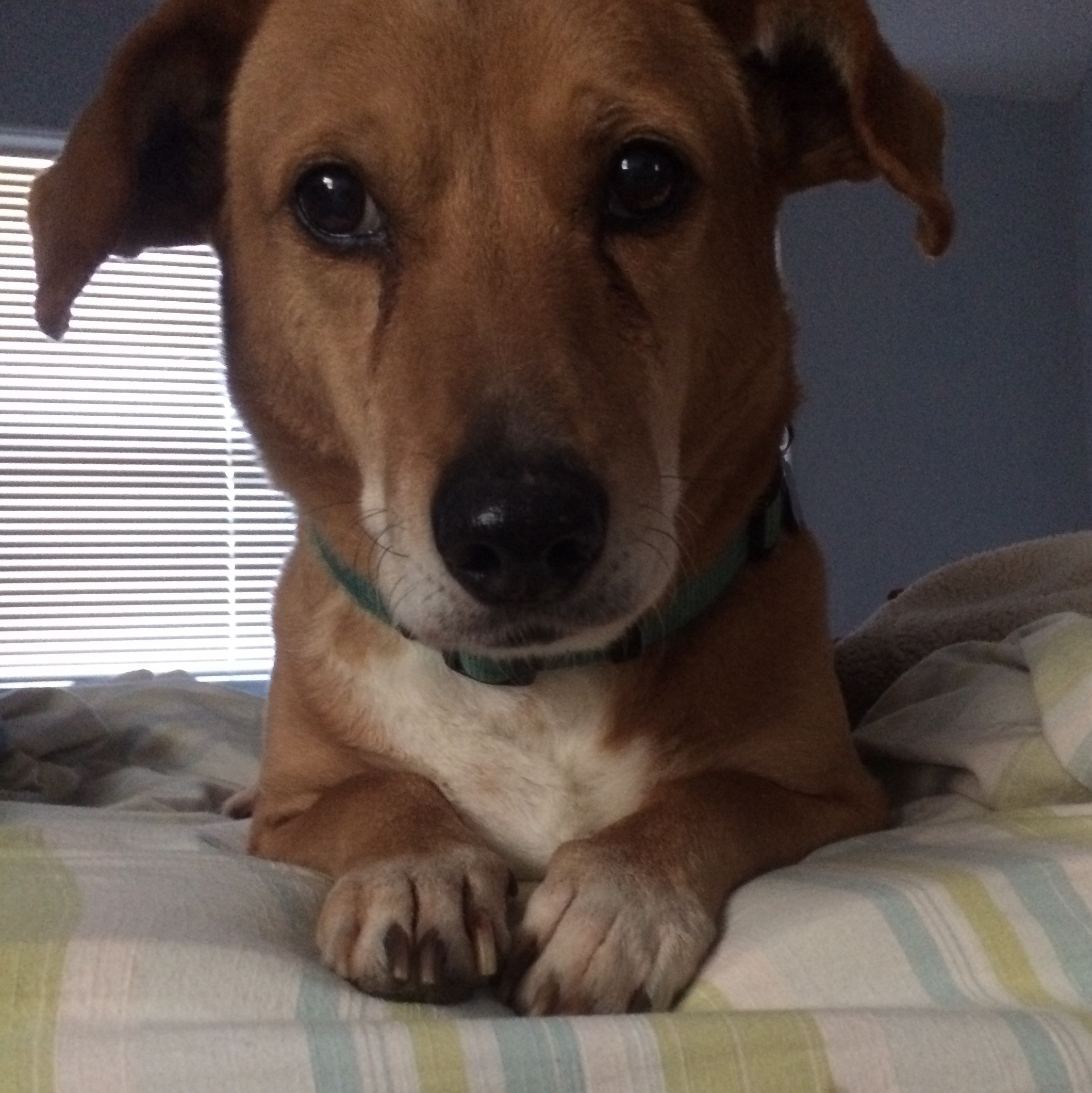
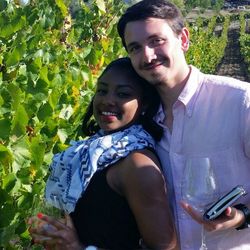

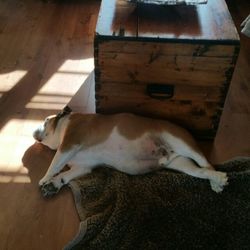





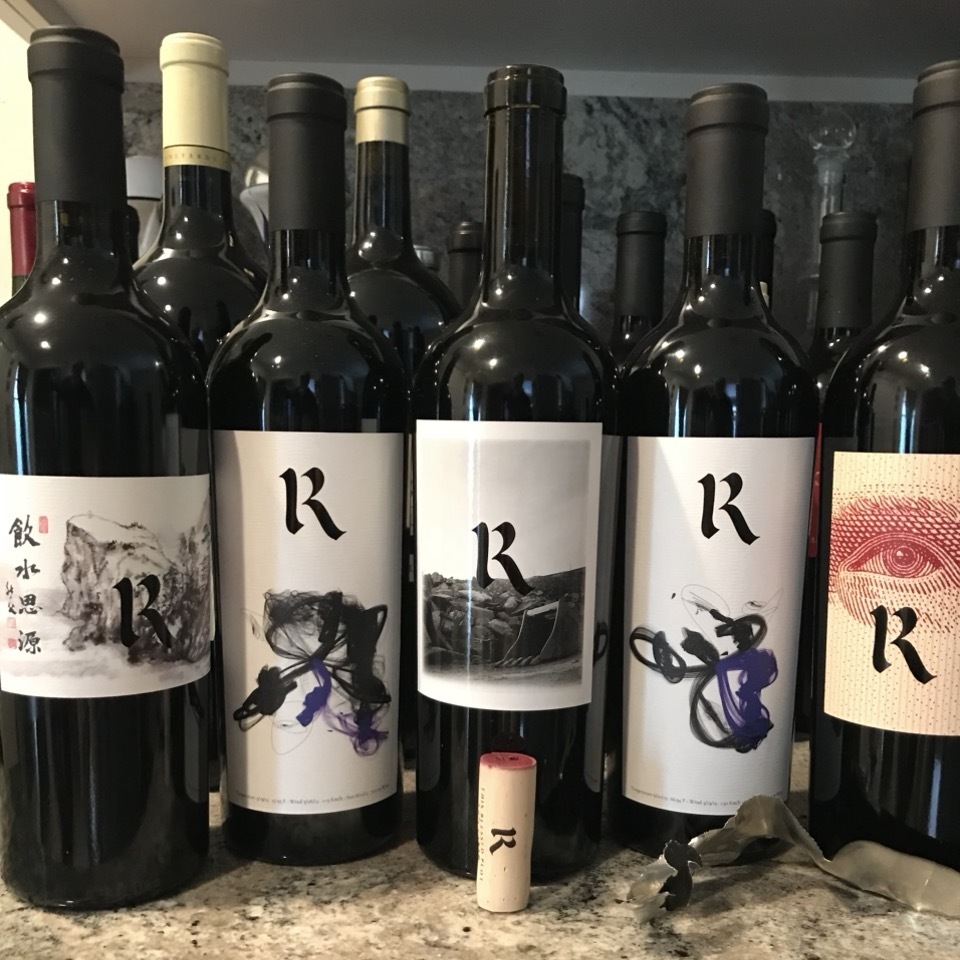








Chris Durall
Four Quarters Brewing LLC. Ghosts In The Sky Double IPA. 8% ABV. — 6 years ago